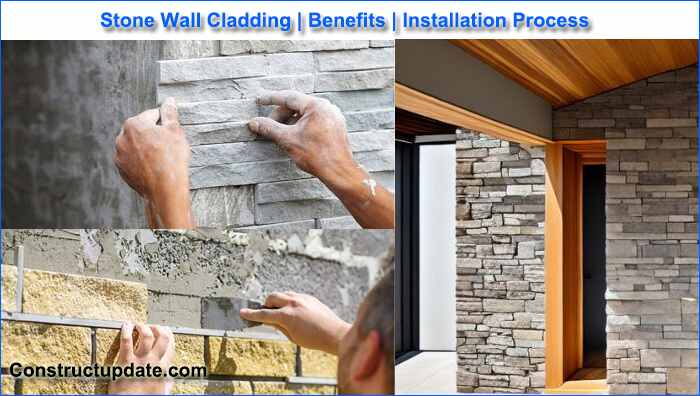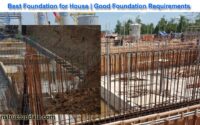All about Stone Wall Cladding and its Benefits
While finishing up your home’s renovations, think about how to make one or more of your rooms or the exterior wall of your house stand out. For this, stone wall cladding is an excellent choice. Although genuine stones were traditionally used for stone cladding, there are now some gorgeous artificial stone cladding possibilities.
What is Stone Cladding?
A thin layer of stone that is applied to a property’s exterior wall or interior wall is called stone cladding. It is applied to a property to give it a textured look. A property’s exterior stone cladding will create the illusion that the structure is composed completely of stone. Stone wall cladding is frequently utilized as a walling solution in gardens. It is a great way to improve an outside area or garden.
Stone cladding comes in two varieties: prefabricated sheets that mimic a piece of stone wall, or thin pieces of cut stone, such as slate or marble. You can affix the stone sheet to your building’s exterior or interior to install stone wall cladding.
The diversity of styles can be used to create a wide variety of looks. Brick, for instance, can be used for stone cladding; marble and slate are also common materials.

The benefits of Stone Cladding
The way it looks
The appearance and texture of any wall, pillar, column, or surface can be significantly altered by applying stone cladding. You can notice how elegant it is just by looking at the gorgeous appearance it presents. Natural stone can either go in the direction of having no two hues that are the same or becoming a single block color because of how distinctive it is.
It is robust/durable
This is an obvious choice because natural stone is known for its durability. For example, Norstone cladding is made of naturally durable materials including quartzite, marble, basalt, and lava stone.
It is adaptable
Stone wall cladding is quite durable, so you can use it anyplace. It provides the solution for any kind of surface, be it for an outdoor fireplace, a bathroom, or anything else. If you have a creative mind, you can create your stone to fit any space inside or outside of your house.
It will raise your property’s worth
Natural stone isn’t the least expensive cladding material, as was previously mentioned, but it’s an investment that can pay off in the long run. Selecting natural stone could help you achieve your goals for your property’s market value should you decide to sell.
It’s easy to maintain
The cladding will remain in perfect shape and require much less cleaning and upkeep if an easy-to-apply water-based sealer is applied to it both internally and externally, as Norstone will typically advise.
How to Install Stone Wall Cladding?
The naturally rustic element of stonewall cladding undoubtedly improves your home’s aesthetic appeal.
On the other side, installing stone wall cladding could be more challenging than installing other kinds of wall cladding.
Its sheer weight makes it difficult to hold against walls and other surfaces, and because it exerts more strain on walls, it is also more likely to fall off or peel.
For optimal sound adhesion, it is therefore imperative that the wall covering and the surrounding region be free of dust and filth.
Large stones that have been finely shaved can be utilized as cladding by attaching them to plywood or boards using a strong mortar or adhesive.
You can also use tiny stones or pebbles to make a mosaic design on the board.
Wall cladding is made of sheets or other thin, flexible materials, such as stick-on stone cladding, and is attached to the wall sheathing with a space between them to let air and water through.
To avoid water leaks and condensation, which can cause the formation of mildew and mold in the wall, the wall must be waterproofed before the stone veneers are installed.
Manufactured Stone Cladding vs Natural Stone Cladding
Although genuine stones from mature trees were traditionally used to make stone cladding, some firms have recently started producing beautiful fake stone cladding. Although many individuals prefer actual, natural stone cladding, others will gladly use imitation stone cladding in order to save money.
Because they prefer a natural appearance, many choose natural stone cladding. Even while it can be difficult to distinguish between manufactured and natural cladding, it is visible if you know what to look for and examine it closely enough. The primary contrast between man-made and natural stone is its color. The color combination of natural stone is gentler than that of produced stone, giving the former a more authentic appearance.
There are also differences in the longevity of artificial and natural stone covering. Materials based on cement are used to create manufactured stone cladding. The resistance of the stone cladding to chipping and breaking will determine how long it lasts. In the meanwhile, the cladding is made of natural stone. As a result, the type of stone used and the source of the stone determine how durable it is.




